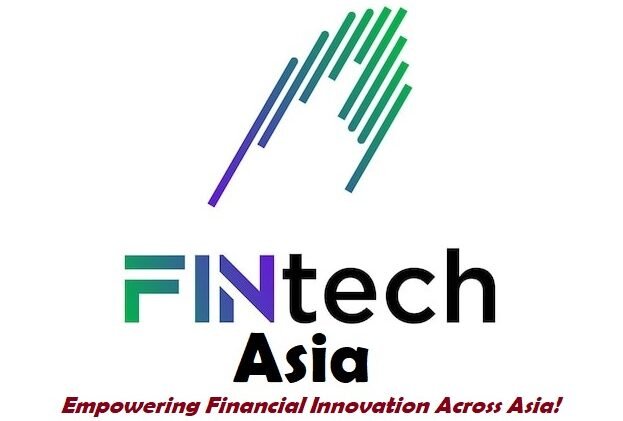Ftasiaeconomy Financial Trends Trom Fintechasia
Introduction
The landscape of financial markets across Asia is undergoing a dynamic transformation driven by rapid technological advancements, regulatory changes, and evolving consumer behaviors. The term “FtasiaEconomy” encapsulates the region’s emerging financial ecosystem, characterized by the fusion of traditional financial institutions and innovative fintech solutions. FintechAsia, a leading platform tracking developments in the Asian financial markets, provides insights into the most critical financial trends shaping the future of the region. This article delves into the key financial trends identified by FintechAsia and explores how they are influencing the broader FtasiaEconomy.
Digital Payments Revolution
The Growth of Cashless Economies
One of the most significant financial trends across Asia is the rapid shift toward cashless economies. Countries like China, India, and Southeast Asian nations have embraced digital payment platforms, with services such as Alipay, WeChat Pay, and Paytm leading the way. This transformation is driven by a combination of factors, including increased smartphone penetration, favorable regulatory frameworks, and the COVID-19 pandemic, which accelerated the adoption of contactless payments.
FintechAsia reports that digital payments in Asia are projected to reach a valuation of over $3 trillion by 2025. This trend is particularly strong in China, where digital wallets account for over 90% of retail transactions. Southeast Asia is following suit, with mobile payment adoption rates surging, especially in countries like Indonesia, Vietnam, and Thailand.
Cross-Border Payments and Remittances
Cross-border payments are another area where fintech innovation is reshaping the financial landscape. Traditional remittance services have long been plagued by high fees and slow processing times. However, fintech startups are disrupting this space by offering faster, cheaper, and more transparent solutions. Platforms such as TransferWise (now Wise) and Ripple have gained significant traction in Asia, particularly in countries with large expatriate populations.
FintechAsia highlights that the remittance market in Asia is expected to grow at a compound annual growth rate (CAGR) of 5.2%, reaching $200 billion by 2025. This growth is fueled by fintech solutions that are making cross-border payments more accessible and efficient, benefiting both businesses and individuals.
Rise of Digital Banking
Neobanks and Challenger Banks
The rise of digital banks, also known as neobanks or challenger banks, is another trend shaping the FtasiaEconomy. Unlike traditional banks, neobanks operate entirely online, offering a range of financial services without the need for physical branches. This model has gained popularity, particularly among younger, tech-savvy consumers who prefer the convenience and flexibility of digital banking.
In Asia, countries like Singapore, Hong Kong, and South Korea have been at the forefront of digital banking innovation. FintechAsia notes that several neobanks, including Grab’s GrabPay, Gojek’s GoPay, and Ant Financial’s MYbank, have secured digital banking licenses, signaling a shift in the region’s financial services landscape.
Open Banking and API Integration
The concept of open banking, which allows third-party financial service providers to access consumer banking data via APIs (Application Programming Interfaces), is gaining traction in Asia. Open banking enables fintech companies to develop innovative products and services by leveraging customer data from traditional banks. This trend is expected to enhance competition and provide consumers with more personalized and cost-effective financial solutions.
FintechAsia reports that open banking initiatives are being rolled out in several Asian countries, including Singapore, Hong Kong, and Australia. Regulatory bodies in these regions are encouraging collaboration between traditional banks and fintech startups to foster innovation and improve financial inclusion.
Blockchain and Cryptocurrency Adoption
Blockchain for Financial Services
Blockchain technology is transforming various sectors of the FtasiaEconomy, particularly in the financial services industry. Blockchain’s decentralized and secure nature makes it ideal for applications such as cross-border payments, trade finance, and supply chain management. FintechAsia highlights several blockchain-based initiatives across Asia, including China’s ambitious Blockchain Service Network (BSN) and Japan’s efforts to develop a digital yen.
In addition to enhancing the efficiency of financial transactions, blockchain is also being used to improve transparency and reduce fraud. For example, trade finance platforms in Singapore and Hong Kong are leveraging blockchain to streamline processes and reduce paperwork, resulting in faster and more secure transactions.
Cryptocurrency Regulation and Adoption
Cryptocurrency adoption is on the rise in Asia, with countries like Japan, South Korea, and Singapore leading the charge. However, the regulatory environment for cryptocurrencies varies significantly across the region. While Japan has embraced cryptocurrencies and developed a comprehensive regulatory framework, China has taken a more cautious approach, banning cryptocurrency exchanges and Initial Coin Offerings (ICOs).
FintechAsia notes that despite regulatory challenges, cryptocurrency adoption is growing steadily in Asia. The rise of decentralized finance (DeFi) platforms, which allow users to lend, borrow, and trade cryptocurrencies without intermediaries, is further fueling this trend. Additionally, central banks in Asia are exploring the development of Central Bank Digital Currencies (CBDCs) to complement their existing financial systems.
Financial Inclusion and Microfinance
Expanding Access to Financial Services
Financial inclusion remains a critical challenge in many parts of Asia, particularly in rural areas where access to traditional banking services is limited. However, fintech innovations are helping bridge this gap by providing affordable and accessible financial services to underserved populations. Mobile banking, microfinance, and digital lending platforms are playing a key role in expanding financial inclusion across the region.
FintechAsia reports that countries like India, Indonesia, and the Philippines are seeing significant growth in digital lending and microfinance platforms. These services are providing small businesses and individuals with access to credit, enabling them to participate in the formal economy and improve their financial well-being.
The Role of Mobile Banking in Financial Inclusion
Mobile banking is a key driver of financial inclusion in Asia, with millions of unbanked individuals gaining access to financial services through their smartphones. Services like M-Pesa in Africa have inspired similar initiatives in Asia, such as bKash in Bangladesh and GCash in the Philippines. These platforms allow users to perform a range of financial transactions, including money transfers, bill payments, and savings, without the need for a traditional bank account.
FintechAsia highlights that mobile banking is expected to continue its rapid growth, particularly in Southeast Asia, where the unbanked population remains significant. By leveraging mobile technology, fintech companies are helping to reduce poverty and promote economic development in the region.
Green Finance and Sustainable Investing
The Rise of ESG Investing
Environmental, Social, and Governance (ESG) investing is gaining momentum in Asia as investors increasingly seek to align their portfolios with sustainable and ethical practices. FintechAsia reports that ESG-focused investments in Asia have surged in recent years, driven by growing awareness of climate change, social inequality, and corporate governance issues.
Countries like Japan, South Korea, and Singapore are leading the way in promoting green finance initiatives, with governments and financial institutions encouraging investments in renewable energy, clean technology, and sustainable infrastructure. FintechAsia notes that the region’s green finance market is expected to exceed $200 billion by 2025, as more investors prioritize sustainability in their decision-making processes.
Fintech’s Role in Promoting Sustainable Finance
Fintech companies are playing a crucial role in promoting sustainable finance by developing innovative solutions that enable investors to track and measure the environmental and social impact of their investments. Platforms such as Clarity AI and OpenInvest are leveraging AI and big data to provide real-time insights into the sustainability performance of companies and investment portfolios.
FintechAsia highlights that these solutions are helping to democratize sustainable investing by making it more accessible to retail investors. As a result, the demand for ESG-focused financial products is expected to continue growing, contributing to the long-term sustainability of the FtasiaEconomy.
Conclusion
The FtasiaEconomy is evolving at a rapid pace, driven by a confluence of technological advancements, regulatory shifts, and changing consumer preferences. FintechAsia provides valuable insights into the key financial trends shaping the region, from the digital payments revolution and the rise of neobanks to the adoption of blockchain and the growth of sustainable investing. As these trends continue to unfold, the financial landscape in Asia is poised to become more inclusive, innovative, and resilient, offering new opportunities for businesses and individuals alike.


